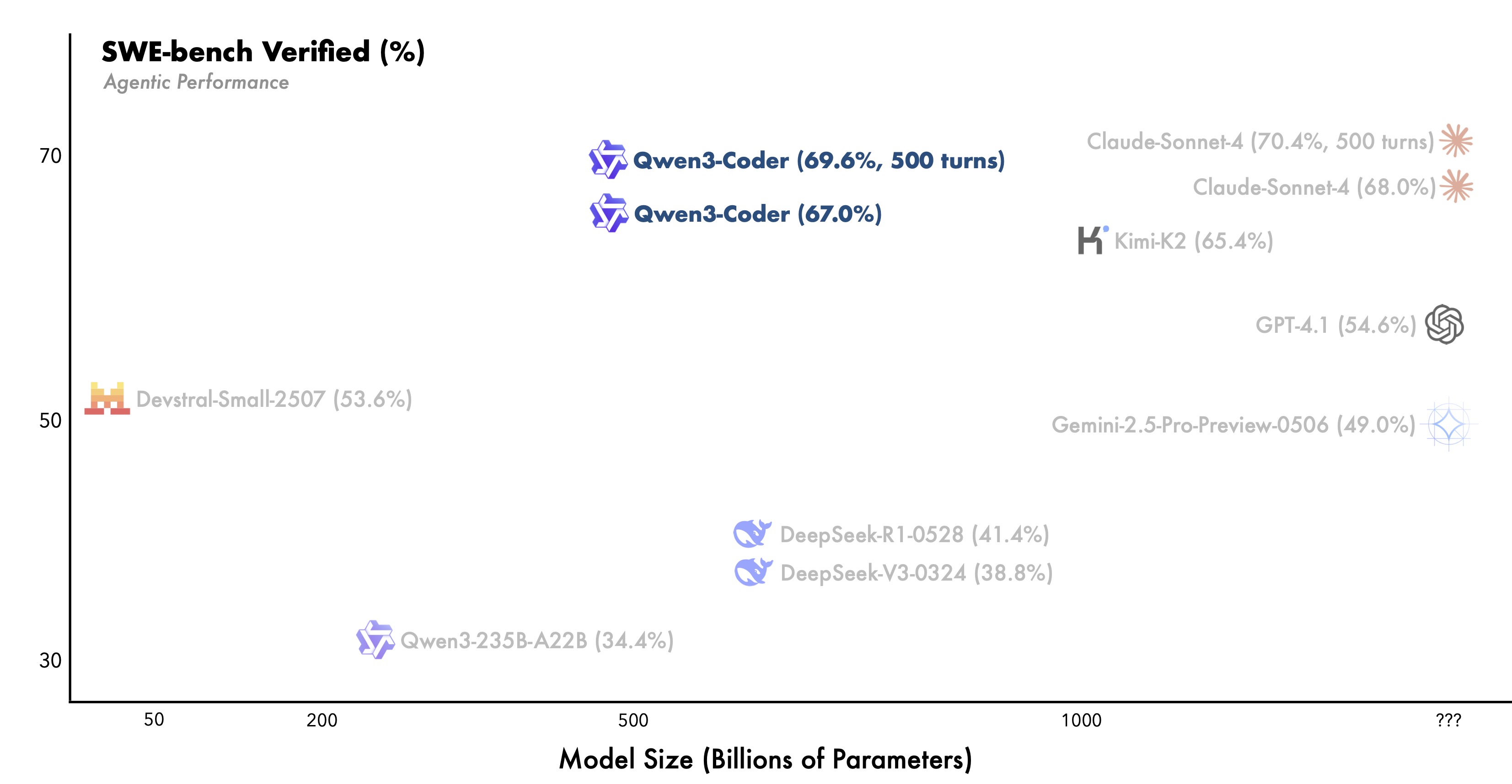Open Source AI Coding Breakthrough Challenges Commercial Giants as Chinese Model Achieves Claude-Level Performance
Alibaba's Qwen3-Coder marks watershed moment in democratizing advanced AI development capabilities
The artificial intelligence landscape shifted dramatically on July 23th as Chinese tech giant Alibaba unveiled Qwen3-Coder, an open-source coding model that industry observers suggest could fundamentally alter the competitive dynamics between proprietary and open-source AI systems. The model's reported performance metrics place it in direct competition with Anthropic's Claude Sonnet 4, marking the first time an open-source system has achieved comparable capabilities to leading commercial offerings in agentic coding tasks.
The 480-billion parameter model, utilizing a mixture-of-experts architecture with 35 billion active parameters, represents a significant escalation in the open-source AI arms race. Market analysts tracking the space note that this development could accelerate enterprise adoption of self-hosted AI solutions while potentially pressuring the pricing models of established commercial providers.
Technical Supremacy Meets Economic Accessibility
Qwen3-Coder's architecture reveals sophisticated engineering choices that challenge conventional assumptions about the resource requirements for frontier AI capabilities. The model's native 256,000-token context window, expandable to one million tokens through Alibaba's YaRN technology, enables repository-scale code analysis that surpasses many commercial alternatives in practical applications.
Performance benchmarks indicate the model achieves state-of-the-art results among open-source systems on agentic coding, browser automation, and tool integration tasks. Independent testing suggests accuracy levels approaching Claude Sonnet 4's reported 37.5% on Terminal-Bench evaluations, while maintaining throughput rates of approximately 160 characters per second with operational costs estimated at $5 per million tokens.
The model's training regimen incorporated 7.5 petabytes of data, with 70% comprising code repositories, supplemented by synthetic data cleaning and specialized post-training on complex coding challenges. This training approach appears to have yielded particular strength in multi-step problem solving and autonomous workflow execution.

Enterprise Adoption Accelerates Self-Hosting Trend
Early enterprise deployments indicate significant interest in the model's capacity for local deployment, particularly among organizations operating in regulatory environments that restrict cloud-based AI services. Financial institutions and government contractors have reportedly begun pilot programs leveraging the model's ability to process sensitive codebases without external data transmission.
The integration ecosystem surrounding Qwen3-Coder demonstrates mature toolchain support, with compatibility across established development environments including VS Code, Cursor, and specialized AI coding platforms. This interoperability addresses a critical barrier that has historically limited open-source AI adoption in enterprise settings.
Technology executives familiar with the deployment process describe installation and configuration as significantly streamlined compared to previous open-source alternatives, with several noting successful production implementations of extremly complex systems within 48-hour timeframes.
Our In-house Performance Limitations Reveal Development Frontiers
Despite its achievements, Qwen3-Coder exhibits characteristics that illuminate the current boundaries of AI coding capabilities. Our early testing at CTOL.Digital reveals tendency toward verbose solutions, with the model occasionally implementing 30-line solutions where more concise alternatives exist. Code generation quality shows variability in comment density and language consistency, with multilingual output sometimes appearing without explicit instruction.
The model demonstrates particular challenges with inference-heavy tasks requiring deep reasoning about implicit requirements, where Claude Sonnet 4 still shines the most. Edge case handling and optimization for computational efficiency represent areas where commercial alternatives maintain advantages, according to developers conducting comparative evaluations.
Error patterns include occasional variable name hallucinations leading to compilation failures and the introduction of invisible characters that create debugging challenges. These issues, while infrequent, highlight the ongoing need for human oversight in production environments.
Geopolitical Implications for AI Development
The release coincides with increasing global attention to AI sovereignty and technological independence. Qwen3-Coder's capabilities may accelerate adoption in regions where access to U.S.-based AI services faces restrictions or compliance complications in China. As of now, Claude AI is not widely available in China. Its direct access is blocked for most users in Mainland China, and login or API connections from Chinese IP addresses are generally restricted by both Anthropic and China's internet controls.
The model's development within China's domestic technology ecosystem demonstrates the country's advancing capabilities in frontier AI research, potentially shifting investor perceptions of the competitive landscape between Chinese and Western AI companies.
Market Dynamics and Competitive Response
Qwen 3 Coder is built on open-source large language model (LLM) foundations, a strategic choice that addresses many enterprise use cases—particularly those with stringent security and compliance requirements. This shift reflects a broader industry trend: as open-source LLMs reach performance levels comparable to commercial offerings, premium AI providers face mounting pressure to justify their pricing. Analysts note this could accelerate the commoditization of general AI capabilities, pushing innovation toward more specialized, value-added solutions.
For the enterprise software market, the implications are significant. Organizations are re-evaluating the total cost of ownership for AI development tools, with self-hosted, open-source-based solutions like Qwen 3 Coder becoming more appealing—especially as infrastructure costs drop relative to commercial subscription fees.
Venture capital interest is increasingly directed toward companies leveraging open-source models to build tailored applications, rather than investing in firms competing solely on base model performance.
Reshaping the Future of Software Development
Qwen3-Coder represents more than a technical achievement; it signals a fundamental shift toward democratized access to advanced AI coding capabilities. As organizations worldwide evaluate their AI strategies, the availability of high-performance open-source alternatives may accelerate adoption timelines and expand the universe of potential AI-powered applications.
The model's success demonstrates that the concentration of advanced AI capabilities among a small number of commercial providers may prove temporary. As development costs for sophisticated systems continue declining and open-source communities demonstrate increasing sophistication, the competitive landscape appears poised for continued evolution.
Personal take from Ken: Try it out at Github, it is quite amazing!
Disclaimer: Past performance of AI models does not guarantee future results. Investment decisions should be made in consultation with qualified financial advisors who can evaluate individual circumstances and risk tolerance.
